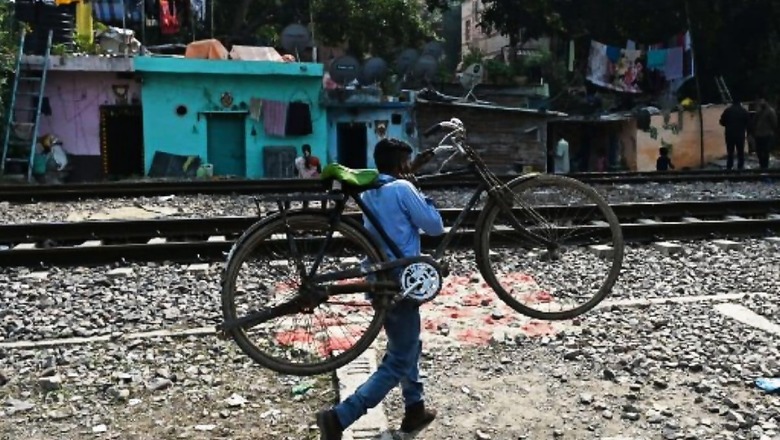
views
The Supreme Court had ordered the removal of slums on railway land across Delhi in August 2020, but over two-and-a-half years later there has been no action. In fact, 150 acres of land belonging to the national transporter remains under encroachment in the city.
According to official documents accessed by News18, around 2.5 lakh people are living in slums across the city – Naraina Vihar, Azadpur, Shakur Basti, Mayapuri, Sriniwaspuri, Anand Parbat and Okhla. “According to the last survey done by the DUSIB (Delhi Urban Shelter Improvement Board) in 2014, there are 48,000 shanties on railway land in Delhi covering around 150 acres. This is not only impacting movement of trains as we need to put speed restrictions on certain parts due to safety reasons; it’s also a major challenge to ensure cleanliness,” a ministry official told News18 on condition of anonymity.
The official said despite regular drives to clean out these areas, every other day the same amount of garbage is dumped in and around the tracks. There is no way to keep these areas clean “unless jhuggis are removed”, the official added.
In its order, the SC had directed that the railways, Delhi government and ministry of urban development should try and sort this out. The railways said as a policy, it was not supposed to undertake rehabilitation and resettlement (R&R).
“As a policy, it should be undertaken by the state government. This practice is followed across India. The state governments have to bear the cost of resettlement. If the railways started R&R, it would be an invitation for all to come and settle on railway land and then they would demand compensation for resettlement. If we started doing it in one place, it will be used as an example everywhere across India,” the railway official said.
What is the Delhi government saying?
The Delhi government said under the Delhi Slum and JJ Rehabilitation and Relocation Policy, 2015, the rehabilitation work has to be undertaken by the agency that owns the encroached land. “Since the railways owns the land, it has to take up the R&R. In case they want us to take up this task for them, they should pay us,” an official told News18, on condition of anonymity.
According to DUSIB’s official website, it will be the nodal agency for relocation and rehabilitation of JJ clusters from land belonging to MCD and Delhi government as well as its departments and agencies. “In case of central government agencies like railways, Delhi Development Authority, land and development office, Delhi Cantonment Board and New Delhi Municipal Council, they will be free to carry out the relocation and rehabilitation themselves as per policy of the Delhi government or may entrust the job to DUSIB,” the website reads.
How encroachment is impacting the railways?
In the national capital, projects worth Rs 550 crore are stuck because of encroachment on railway land. “Many of our projects are stuck because of these encroachment. One of them being the grade separator (a railway flyover) at Daya Basti. The construction work for this had stopped around 10 to 12 years ago because of land encroachment. There are around 1,700 shanties in this area, which need to be cleared for the work to be completed. It is half done and the investment on it is being wasted. This project was around Rs 200 crore,” the official said.
Another such project stuck is the construction of a coaching terminal at Shakur Basti at a cost of around Rs 250 crore. There are about 750 shanties impacting the completion of this project.
Encroachment has also affected an increase in line capacity. The official said the railways wished to increase the lines to ease traffic flow but was unable to do so. Similar projects planned for ring railway as well but “everything is stuck”, the official added.
“At certain locations, encroachment causes bottlenecks and safety hazards in train operations and difficulties in track maintenance. Encroachment is also a nuisance to the public besides a bottleneck to creating new infrastructure,” the railway official added.
According to the ministry of railways, 782.81 hectares (1,934.36 acres) of land is under encroachment as on March 31, 2022, across India. The northern zone has the highest share of this – 157.89 hectare (390 acres) – followed by the southeastern zone with 140.60 hectares of land under encroachment.
Read all the Latest India News here




















Comments
0 comment